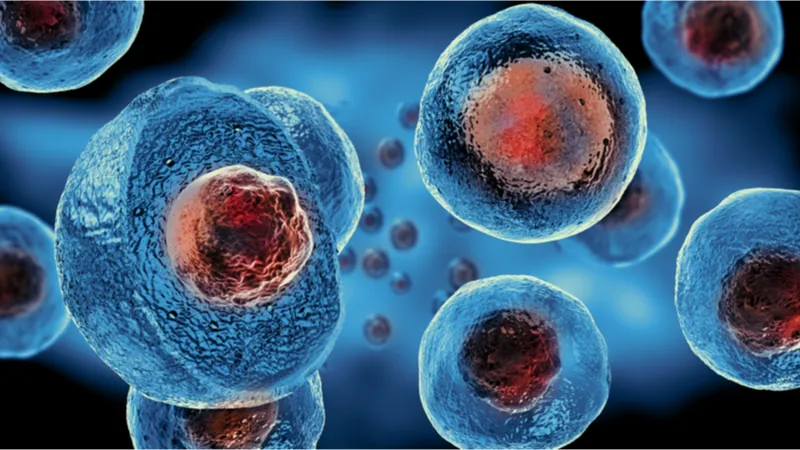In a new study published in Aging Cell [1], researchers report that transient activation of the Yamanaka factor Oct4 allowed partial reprogramming of cells, which led to rejuvenation in these cells and in a mouse model of premature aging.

Read More
This research used a mouse model of Hutchinson-Gilford progeria syndrome, an extremely rare and devastating genetic disorder. Children with progeria age rapidly and usually die young. Progeria is caused by a mutation in the gene that codes for lamin A, a protein that envelops and protects the nucleus from damage. This mutation causes a shorter, ineffective version of lamin A, called progerin, to be created instead [2].
Reversing epigenetic alterations with Oct4
In this study, the researchers looked at a few aspects of aging, primarily focusing on epigenetic alterations.

Read More
Researchers activated the gene Oct4 in lab-grown mouse fibroblasts, which form connective tissues that connect to and support other tissues. They reported that this altered the epigenetics of these fibroblasts, causing changes to the expression of genes responsible for their differentiation and de-differentiation. Those processes make cells more or less specialized, respectively.
Progeric cells rejuvenated
The researchers wanted to assess the influence of Oct4 in progeric fibroblasts. They altered healthy fibroblasts to produce the mutated, progeric version of lamin A. Then, they activated Oct4 in those cells and made several observations that suggest that these cells experienced rejuvenation.
They observed that activation of Oct4 reduced DNA breaks, which accumulate with both age and progeria. Similarly, Oct4 reduced the number of dying progeric cells. Additionally, activating Oct4 in the progeric fibroblasts restored the activity patterns of stress response-related and senescence-related genes.
The researchers also discovered that activating the Oct4 gene led to the suppression of mutated lamin A in mouse fibroblasts. They speculated that reduced progerin production leads to reduced accumulation of cellular progerin, which should lead to a similar reduction in biomarkers of aging.
These experiments suggest that activation of Oct4 can effectively alleviate the age-associated phenotypes of progeric mouse fibroblasts.
Lifespan extension in progeric mice
Since cellular experiments were encouraging, they went on to test Oct4 in a living organism. For this, they activated the Oct4 gene in progeric mice. The researchers observed reduced weight loss and improved appearance in the treated progeric mice. The treatment group experienced a dramatic increase in median and maximum lifespan as well.
The mice were monitored for the appearance of tumors, as tumors were previously reported in animals with activated Yamanaka factors [3]. However, when only Oct4 was expressed, it did not lead to tumors in these mice, nor were tumor-related genes activated.
Tissue rejuvenation and altered gene expression
Progeric mice die mainly due to cardiovascular diseases similar to those associated with old age. The main driver of mortality in old age is progerin-induced vascular smooth muscle cell death [4]. This was found to occur in the progeric mouse model used in this experiment, and it led to stiffening of the aorta and impairment of cardiac functions [5].
In progeric mice with activated Oct4, this degeneration did not occur, and there was also a lack of harmful aortic thickening. The researchers also assessed the gene expression in other organs, and they found that the activity of senescence-associated genes was significantly decreased in progeric mice with activated Oct4. They also observed signs of rejuvenation in some tissues, including the skin and kidney.
The results obtained in progeric mice prompted them to assess the influence of Oct4 activation on normal mice. The authors of this study assessed the expression of senescence-associated genes in multiple organs in two-year-old mice, which is very old for these animals. Activation of Oct4 in these mice resulted in significantly reduced activity of senescence-associated genes and fewer harmful epigenetic alterations. The researchers found that these changes led to fewer age-related cardiovascular abnormalities.
Activation of Oct4 as a rejuvenation therapy
This study has found that activating the Oct4 gene led to a reduction in progerin production. The authors suggest that their approach could be developed as a therapeutic strategy for progeric syndromes caused by mutations in lamin A. They also speculate that the technology they used cam be potentially used in rejuvenative treatments in the future.
Literature
[1] Kim, J., Hwang, Y., Kim, S., Chang, Y., Kim, Y., Kwon, Y., & Kim, J. (2023). Transcriptional activation of endogenous Oct4 via the CRISPR/dCas9 activator ameliorates Hutchinson-Gilford progeria syndrome in mice. Aging cell, 22(6), e13825.
[2] Lamis, A., Siddiqui, S. W., Ashok, T., Patni, N., Fatima, M., & Aneef, A. N. (2022). Hutchinson-Gilford Progeria Syndrome: A Literature Review. Cureus, 14(8), e28629.
[3] Ohnishi, K., Semi, K., Yamamoto, T., Shimizu, M., Tanaka, A., Mitsunaga, K., Okita, K., Osafune, K., Arioka, Y., Maeda, T., Soejima, H., Moriwaki, H., Yamanaka, S., Woltjen, K., & Yamada, Y. (2014). Premature termination of reprogramming in vivo leads to cancer development through altered epigenetic regulation. Cell, 156(4), 663–677.
[4] Hamczyk, M. R., Villa-Bellosta, R., Gonzalo, P., Andrés-Manzano, M. J., Nogales, P., Bentzon, J. F., López-Otín, C., & Andrés, V. (2018). Vascular Smooth Muscle-Specific Progerin Expression Accelerates Atherosclerosis and Death in a Mouse Model of Hutchinson-Gilford Progeria Syndrome. Circulation, 138(3), 266–282.
[5] Murtada, S. I., Kawamura, Y., Caulk, A. W., Ahmadzadeh, H., Mikush, N., Zimmerman, K., Kavanagh, D., Weiss, D., Latorre, M., Zhuang, Z. W., Shadel, G. S., Braddock, D. T., & Humphrey, J. D. (2020). Paradoxical aortic stiffening and subsequent cardiac dysfunction in Hutchinson-Gilford progeria syndrome. Journal of the Royal Society, Interface, 17(166), 20200066.




